Can a Blue Heeler Be a Family Dog? (The TRUTH)
Cute, quick, and clever, Blue Heelers are an all-around attractive breed. Their herding tendencies come with pros and cons, but it’s also part of what makes them so interesting. Generally healthy and at a manageable size, these pups make great companions to all sorts of human owners.
However, not every intelligent and adorable dog settles into a place in family life so well. Read on to find the answer to the question, “Can a Blue Heeler be a family dog?”

Blue Heelers As Family
So, can a Blue Heeler be a family dog? The short answer is yes, with some crucial stipulations.
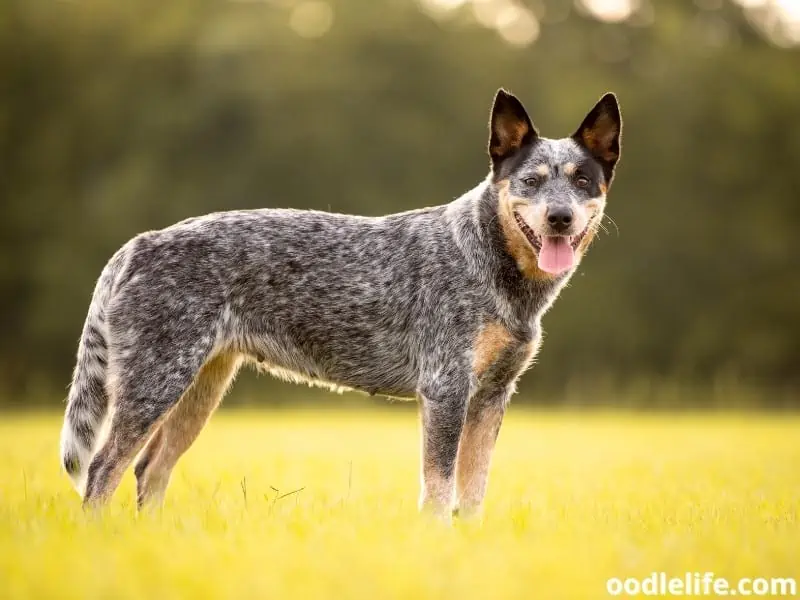
Giving a Blue Heeler enough exercise makes them excellent family pets! They have so much natural energy that needs to be directed someplace. Otherwise, your home, yard, and belongings are at high risk of being ruined.
There’s another caveat we must mention. Be aware of small children. Because this breed thrives on having a job to do, their innate prey drive combined with herding instincts means they could be nipping at your toddler more than you (or they) would like.
Though they most likely won’t cause actual harm to your child, this pesky habit can be annoying and uncomfortable for everyone.
For this reason, I encourage homes with young kids to wait a few years before considering a Blue Heeler. If you want a dog now, you might consider a more easygoing breed, like a Golden Retriever.
It’s essential to educate yourself about whatever dog breed you choose. It will help you understand whether they fit with your lifestyle and encourage your bond with your potential new pet.
Keep reading to learn more about the Blue Heeler and see if this dog is suitable for your household.
Blue Heeler Breed
The Blue Heeler has a fascinating developmental history and often gets confused for other similar herding dogs. Below I’ll break down the differences so you can understand your Blue Heeler better.
History
Let’s travel back to Australia in the 1800s. The beef industry was booming, and ranchers needed an intelligent dog, quick on its feet, which could help them round up the cattle. As a year-round worker, the dog would also need to withstand Australia’s climate extremes.
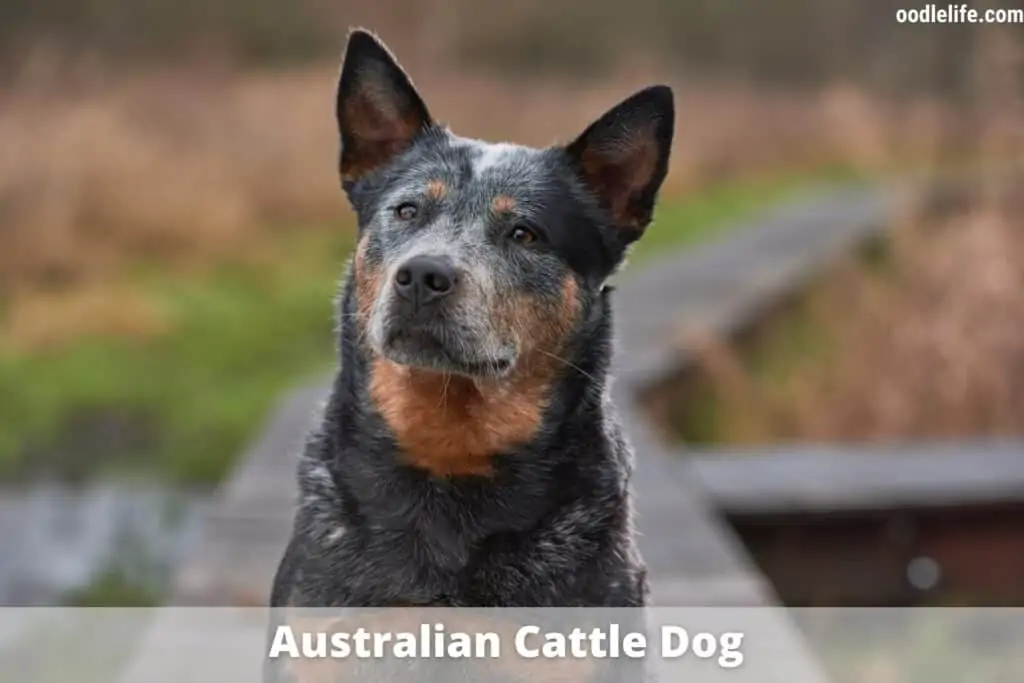
They decided to ship hardy dogs from the UK and cross them with native Australian Dingos for the hardiest canine possible. Several generations of this resulted in the sturdy, speckled pup we recognize today as the Australian Cattle Dog, also called a Blue or Red Heeler (more on this later).
In 1980, the American Kennel Club codified the breed’s registration. They were initially a member of the Working Group, then transferred to the Herding Group when it was created in 1983.
Today, Heelers are farm dogs through and through. They are eager to work and not aggressive toward humans. They aren’t mean to other animals, either.
However, some livestock who have been nipped at the heels might disagree.
Appearance
The Blue Heeler has a distinctive look. A gray mottled pattern appears “blue” when juxtaposed against the other brown and black markings. Though individual coat patterns may vary, most Heelers have tan on their legs and underbelly, which may give way to gray or black paws.
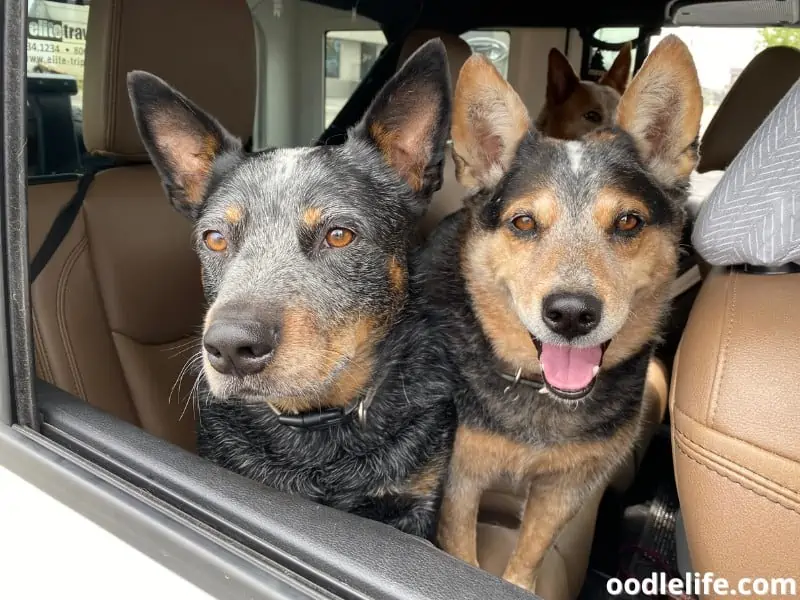
No two dogs look alike, which makes this breed unique!
Blue Heelers have cute pointed ears, which contribute to their alertness. A relatively short face leads to a thick neck and a short, stocky body. Typically, they stand 17-20 inches tall and weigh between 30 and 50lbs when fully grown.
Temperament
The Blue Heeler is similar to a Border Collie and other herding breeds with its quiet, slinky nature. Often you don’t know where the dog is until it pops up from some brush or out from behind a corner where it has been lurking.
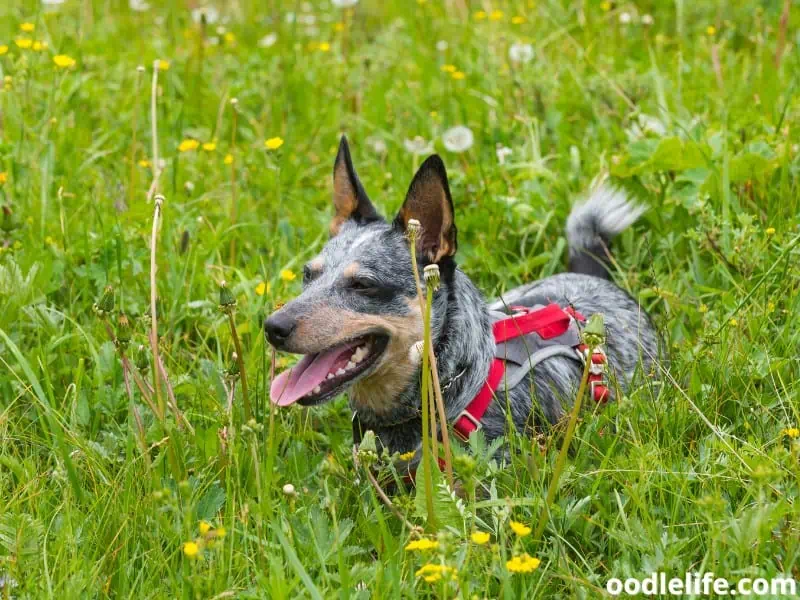
They are independent thinkers and though eager to learn, can also be stubborn. Training your Blue Heeler takes longer than a Labrador (for example) because you have to prove to them that you’re the boss and that they will benefit from following your command. With these dogs, it’s important to establish dominance, so they don’t take advantage.
Heelers are loyal and protective of their families and their territory. They make excellent guard dogs, not for their size or intimidating look, but because they will immediately sound the alarm on an intruder. The flip side of this characteristic is that they can be aloof and slow to warm up to strangers.
Tenacious, obstinate, and clever, a Blue Heeler is never boring. Bring this type of pup into your life, and you’re guaranteed a fun and exciting companion for many years.
Care
Blue Heelers are amazingly low-maintenance dogs. With occasional teeth brushing, nail clipping, and bathing, they do just fine without special care.
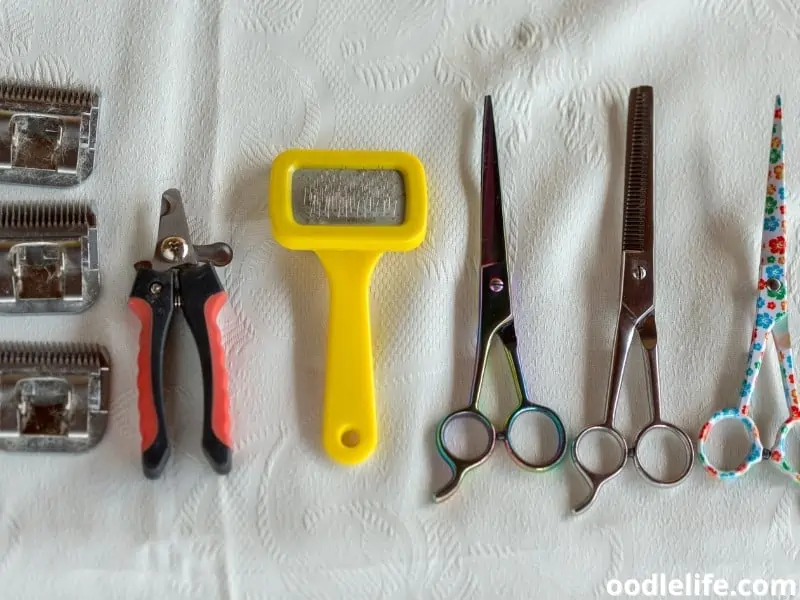
Heelers don’t require much at all in the grooming department. Just be sure you’re aware of shedding season, which occurs in the spring and begs you to work through their thick coat with a rake or de-shedding brush.
Due to the active nature of the breed, Blue Heelers require a healthy diet. Buy good-quality kibble or supplement with healthy foods, such as chicken, salmon, or vegetables, to supply your Heeler with the nutrients their energetic bodies need.
The hardiness of these dogs means they’re equally comfortable outdoors in winter and summer. Use caution in extreme temperatures, and ensure they always have shelter. Heelers don’t need the protection of smaller and thinner-coated breeds, however.
As this breed ages, it encounters many of the same physical maladies as other dogs. Hip dysplasia is not uncommon. Retinal atrophy (eventual blindness) and deafness are issues that crop up in Blue Heelers more often than in other breeds.
Other Names
There’s some confusion in the dog community over the actual name of this breed.
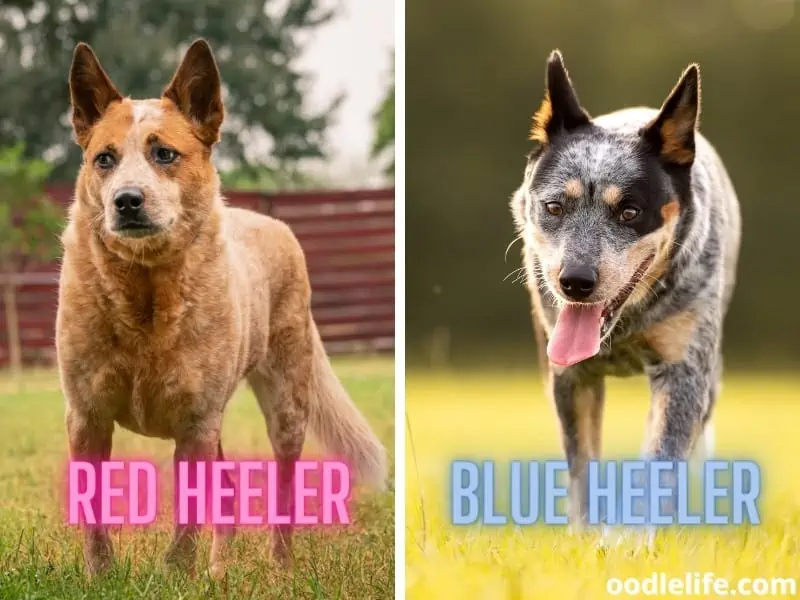
Is it a Cattle Dog? A Heeler? Where does the Australian part come in?
The answer is that “Blue Heeler” and “Red Heeler” are simply the colloquial names for the Australian Cattle Dog. Of course, a Blue Heeler and Red Heeler differentiate from each other by the color of their markings. Blue Heelers are gray and speckled, while Red Heelers have a rust or orange tone to their coat.
No matter what name you know this breed by, you’re guaranteed to be delighted by their personalities and smartness.
Bringing Your Blue Heeler Home
Remember, a Blue Heeler is no Golden Retriever or Labrador. These dogs are intelligent and fast and will push boundaries if you don’t set rules in place for them early on.
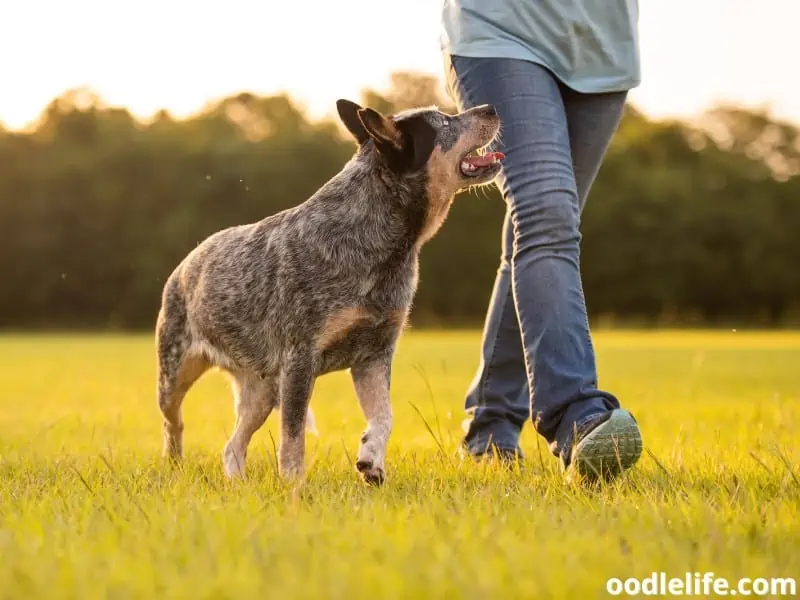
As mentioned before, Heelers are a poor choice of companion for young children. On the other hand, they are fantastic for older kids, including particularly active teens. There is lots of potential for agility training, obedience classes, and other activities that will strengthen the bond between your teenager and the family dog.
A Blue Heeler will be thrilled to jog, play backyard soccer, or go to the park with its human.
Blue Heelers are defensive of their property and can be highly territorial. This breed isn’t a good option if you aren’t prepared to handle barking and incessant running along fence lines. However, it’s excellent if you are looking for a dog to protect your property and family from outside threats.
You can train your dog to stop barking, but it will take work.
Due to their strong herding instincts, you must exercise caution when placing them in proximity to waterfowl, poultry, cats, pet rodents, and other small animals. There’s no guarantee that your Blue Heeler won’t consider these animals a sport and view chasing or hunting as a challenge.
I Spy a Blue Heeler
The trainability of these dogs means they often appear on TV and in movies. Seeing a Blue Heeler on the big screen is exciting and might even encourage you to get one of your own! Here are some places you can find a Blue Heeler in popular media:
- Movies: Mad Max, The Incredible Hulk, Babe, Man from Snowy River, Tombstone, The Patriot, Planes, Trains, and Automobiles
- TV: Dexter, American Outlaw, Texas Rising, Damages
Final Thoughts
Intelligent, brave, and amusing, there’s no shortage of wonderful moments when you bring home a Blue Heeler. They are better in families with older kids, especially those who will give them plenty of exercise.
These dogs are hardy and not susceptible to many health issues, giving them endurance around a house or farm as well as many years of companionship to their humans. I highly recommend a Blue Heeler for your household, as long as you are prepared for the energy it takes to give them a good home.